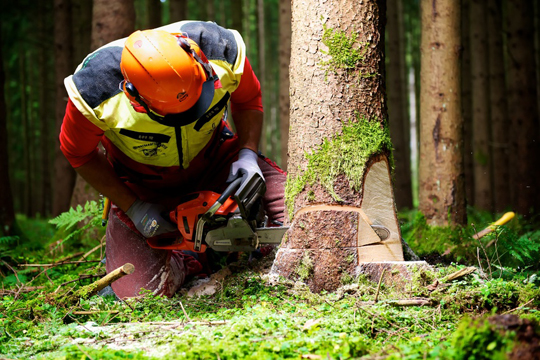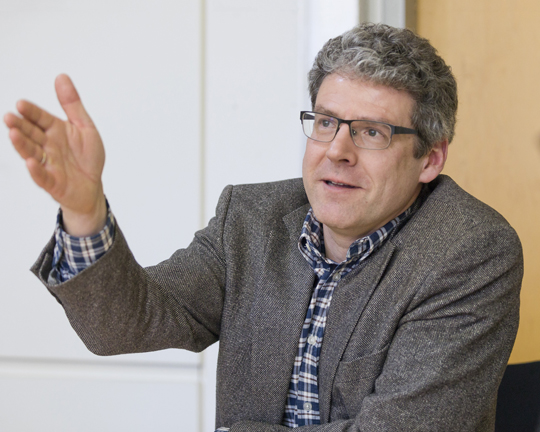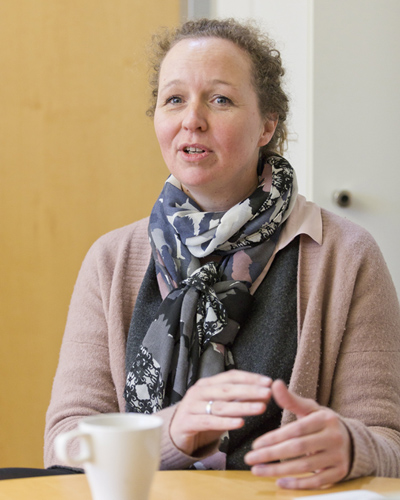Man-made nature
Freiburg, Jan 23, 2018
They can live for centuries; their crowns reach for the sky; their roots dig deep into the earth: Trees pull people in. For some people it is hard to understand that foresters seek to thin out the forest for ecological purposes. How can society gain more acceptance for forest management, and what does a campaign look like that convincingly communicates this to the public? The Freiburg winter colloquium “Forest and Wood” being held January 25-26, 2018 will address these very questions. Sonja Seidel sat down for a chat with Prof. Dr. Daniela Kleinschmit and conference organizer Prof. Dr. Ulrich Schraml.

Foto: AK-DigiArt/Fotolia
Ms. Kleinschmit, why is it important for forest management to come more into the public eye?
Daniela Kleinschmit: We use wood a lot in Germany – it has to come from somewhere. That is why it is important to understand that an important part of the forest is its commercial use. It is not just a place to go for a nice walk. Of course, sustainability is an important aspect so that we can lay parquet floor with a good conscience or buy a wooden cabinet. Luckily, we can assume in Germany that wood is produced in a resource-saving manner.
Nature conservation, recreation, commercial use - people have a lot of different associations when it comes to the forest.
Ulrich Schraml: Exactly. From a cultural historical perspective, it is also interesting to see how people view the forest. It has long stood for an area of life that is dissociated from every day life. A lot of fairytales, for instance, deal with robbers or witches that live in the forest. People tend to think of things there that don’t have a place in society. That applies today as well. Just think of the new concept of the burial forests. At the same time, people go to the forest when they need downtime and want to leave the city behind them. Given these various aspects, it is hard for some people to image that others make money off the forest by producing raw materials from it.

“The forests we know are man-made,” says Ulrich Schraml. Photo: Jürgen Gocke
What dangers do you see with such an emotionally charged topic?
Kleinschmit: In principle, emotionalizing per se is not a bad thing – you see that with the forest example. When I humanize the forest, it is well received by the public, and then people can establish a connection to it. But from a scientific perspective, we would plead for a more neutral relationship between man and forest that is supported by facts. But at the same time, we wouldn’t be able to convey the issue as well. It’s a double-edged sword. We are hoping to come up with solutions during the colloquium that provide ways in which we can combine both better in a campaign.
Schraml: You can reach people best through their emotions. And there is hardly another symbol as strong as the tree, which is moving through its size and mightiness alone. You immediately think of myths about heaven and earth. When people think of a tree, they immediately have an image in their mind’s eye. To not use that for communication purposes would be silly. But I have a problem when publications about the forest tend to appear scientific but, at the same time, also don’t present the facts correctly and instead are based on a mishmash of imagination, anecdotes and scientific findings.
How will forest management develop in the coming years?
Kleinschmit: After World War II, people wanted to have as much wood as possible in as short a time as possible so they planted spruce tress. At the moment, the trend has moved more toward deciduous trees such as beech. We have indeed seen a shift: We are moving away from earlier thinking about a commercial forest and toward a more diverse notion of the forest, including ideas about sustainable use. We have to see whether new tree species can cover current needs because wood can be used to replace other substances that are not as climate-neutral and renewable as trees.

Daniela Kleinschmit calls for a public discussion based more on scientific facts. Photo: Jürgen Gocke
Which questions should the public address more?
Schraml: The forests we know are man-made. There are only so many different types of trees living there because people thought at some point that a recreational forest should be colorful and well-organized. It’s worthwhile to think about and not make such an issue of human intervention into the forest.
How to participate in the winter colloquium
The 38th winter colloquium is being held January 25-26, 2018 in the Paulussaal, Dreisamstraße 2, 79098 Freiburg. No registration is required. A conference free at the door costs 50 euros; for students it costs 5 euros.
For further information

